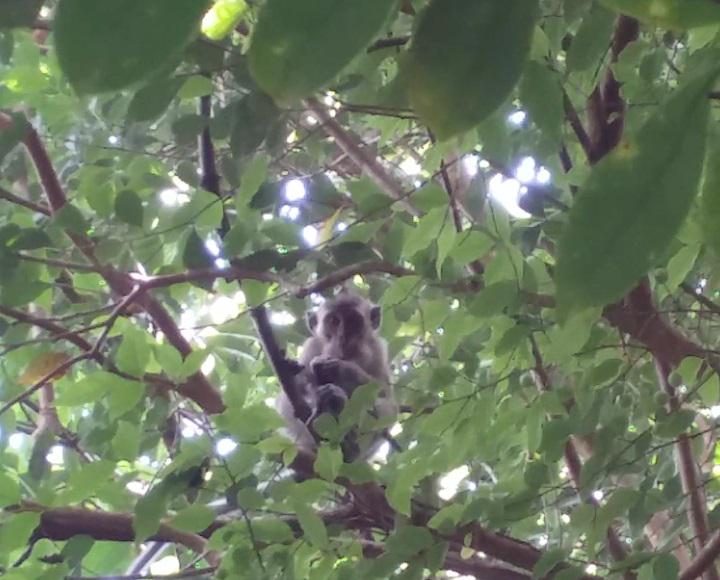Raphael Reinegger
Other projects
6 Nov 2017
The Feeding Competition between an Invasive Macaque Macaca fascicularis and the Mauritian Flying Fox Pteropus niger
15 Mar 2019
The Impact of the Highly Invasive Macaque Macaca fascicularis on the Mauritian Flying Fox and Forest Regeneration
16 Jan 2024
A Systematic Survey of Long-Tailed Macaques in Mauritius Using Drone-Mounted Thermal Infrared Cameras
We aim to quantify the consumption of native fruits and damage to native plants by the invasive long-tailed macaque Macaca fascicularis in a degraded native forest remnant in Mauritius. Furthermore, we aim to study the relationship between seasonal fruit availability, ranging patterns and diet composition of M. fascicularis in order to provide evidence for scarcity of native fruits and insights into the competition between the Mauritian flying fox Pteropus niger and M. fascicularis. Additionally, we aim to estimate macaque density in order to provide a new population estimate based on a similar approach as described in the last population study on M. fascicularis in Mauritius from 1994. Moreover, we aim to continue a study established last year to assess the effects of invasive plant removal on fruit production of native trees, bat consumption of native fruits and changes in native seedling/sapling cover.

Mauritius’ forests are heavily degraded and only a small portion (1%) is good quality native vegetation that is not dominated by alien invasive plants (forests with >50% native plant cover). The native fruits that remain in what is left of the native forests are mostly shared between invasive Macaca fascicularis, other invasive animals (e.g. Rattus rattus and Psittacula krameri) and the endemic Pteropus niger. Macaca fascicularis is known to consume and destroy unripe fruit and seeds of endemic plants. Additionally, its population is likely to have drastically increased in the last 20 years. Therefore, the macaques are likely to have a big negative impact on native forests.
Macaque species commonly prefer ripe fruits and only rely on seeds and unripe fruits in periods of fruit scarcity or in areas where little fruit is available. Therefore, consumption of unripe fruit and seeds can be an indicator of fruit scarcity. However, seasonal fruit availability has never been compared with dietary patterns of macaques in Mauritius, and thus there is no robust evidence that fruits are scarce and that unripe fruits are consumed as a result. If fruits are scarce, consumption of unripe fruit and seeds by macaques would not only lead to increased seed mortality, but also reduce availability of native fruit to the effective seed-disperser P. niger that eats mostly ripe fruit. As a consequence, seed dispersal would be disrupted.
To assess dietary and ranging patterns of M. fascicularis, a troop of macaques inhabiting Calebasses mountain was habituated. This study is a continuation of our previous diet study. The troop is going to be followed three to four days a week for several hours a day until December 2020. Data on activity and diet is collected through scan sampling at 5 minute intervals. Furthermore, GPS coordinates are recorded with a handheld GPS every 30 minutes. Fruit consumption is opportunistically quantified by using focal sampling. During focal sampling, an individual is observed from the moment it starts feeding until it leaves the feeding tree, and all eaten or dropped fruit beneath the feeding tree is counted or collected in ziplock bags. Fruit availability is assessed by estimating fruit cover on trees along several line transects.
Furthermore, fruit production in the plots established last year for our weeding study has been measured for one fruiting season in un-weeded conditions and is going to be measured for two additional fruiting seasons in weeded conditions.